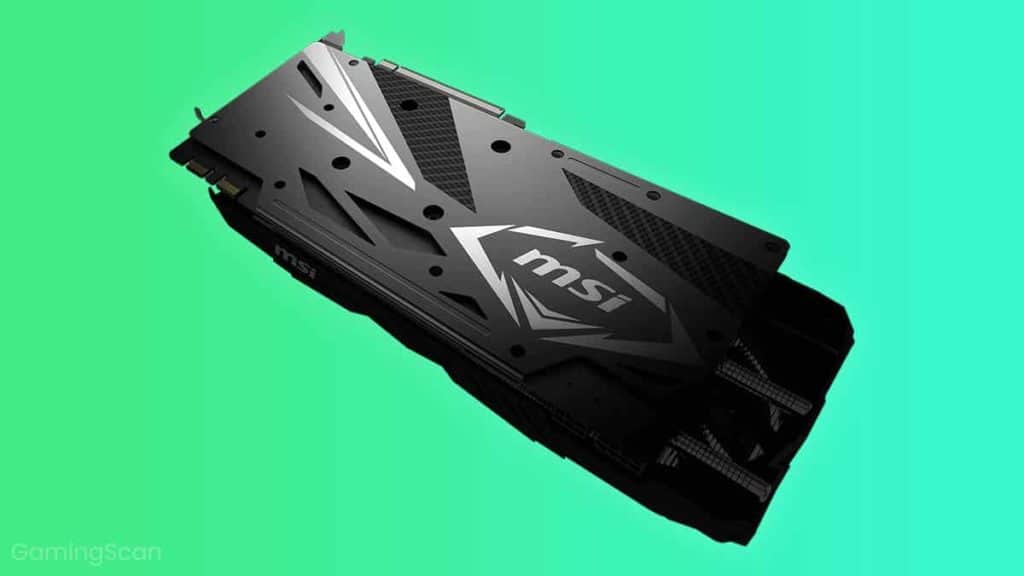Nowadays, every respectable GPU comes with a backplate upon purchase. If you’re curious about what they are and if they’re advantageous, you’re in the correct spot.
If you bought a graphics card within the past five years, you have probably encountered a backplate but likely didn’t give it much consideration. This is likely because its purpose hasn’t been explained properly.
**So, what is a rear plate?** A back plate is a flat, rigid piece of material that serves as a structural support or mounting surface. It’s commonly found in various applications, from electronics to mechanical systems, where it provides stability and a secure foundation for other components. In electronics, back plates are often used in computer cases, where they hold and organize ports, connectors, and expansion slots. They help maintain the proper positioning of components while also providing electromagnetic shielding. In mechanical applications, back plates can serve as mounting surfaces for gears, motors, or other mechanical parts. They distribute loads and forces across a wider area, preventing damage to the main structure. The material of a back plate varies depending on its intended use – it could be made of metal, plastic, or composite materials, each chosen for specific properties like strength, weight, or electrical conductivity.
In short, it’s a plate (to state the obvious) that goes to the back of your graphics card. Its purpose is to keep the graphics card in shape, as modern GPUs usually come with substantial PCBs and even more massive coolers.
It’s worth pointing out that mid-range and budget-friendly cards generally still aren’t at the scale of massive 3-fan enthusiast-grade cards as far as cooler dimensions is concerned.

Even for cards that don’t necessarily require a backplate, having one wouldn’t be a detrimental thing. On the other hand, if your graphics card didn’t include a backplate, there’s no real need to obtain one. Your GPU will function perfectly fine without it.
Table of ContentsShow
Aesthetics
However, this protection isn’t the primary purpose of a backplate. The most obvious use, and perhaps its most vital one, is that it covers up the PCB. Many people appreciate backplates for this reason.
Colored lighting can also be added to the backplate. This is perfect for people who like to tinker with their rig’s aesthetics and enhance the interior of their PC case.
It could even be argued that RGB lighting is the largest selling point of a backplate, and we couldn’t agree more. If you’re an RGB aficionado, then a GPU backplate is undoubtedly worth it. Its ample surface area will allow you to illuminate the inside of your PC case exactly how you want.
Cooling
Another key point when considering whether or not GPU backplates are worthwhile is the supposed heat-related benefit.
Since backplates initially emerged, people have pondered whether they would aid in cooling a graphics card or solely heat it up. There seems to be no general answer; it mainly depends on the composition of the backplate material.
As you might have surmised, plastic backplates aren’t particularly effective at heat dissipation. At the opposite end of the spectrum, we have metal backplates. Logic would suggest that this is a reliable cooling solution, but you might be surprised to learn that it actually isn’t.

There are also backplates made using various materials, such as graphene, but they typically all produce identical results.
As this is a hotly debated topic, there have been numerous tests over the years, and, unfortunately, we have to report that they have largely been indecisive.
Despite some backplates featuring extensive contact areas and thermal pads that function as heat dispersers, it’s still impossible to give a conclusive answer.
Finally, and this is vital to point out, any cooling or heating brought on by the backplate will only result in a decrease or increase of the temperature by a few fractions of a degree. Essentially, for better or worse, the backplate won’t be much of a factor in your GPU’s thermal.
So, is a graphics card backplate useful?
Like many inquiries related to your PC, this comes down to personal preference. If you have a modern graphics card, the decision will likely have already been made for you unless you’re planning on removing it manually, which is quite pointless.
If you’re an RGB enthusiast, you will probably find a backplate to be worth the money and will be able to customize it to your heart’s content. If you’re buying a top-tier premium graphics card, then a backplate is highly advised.




